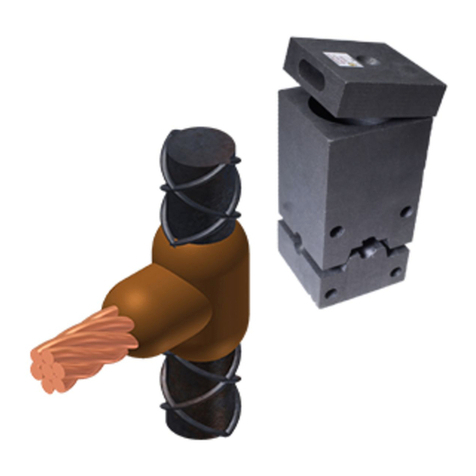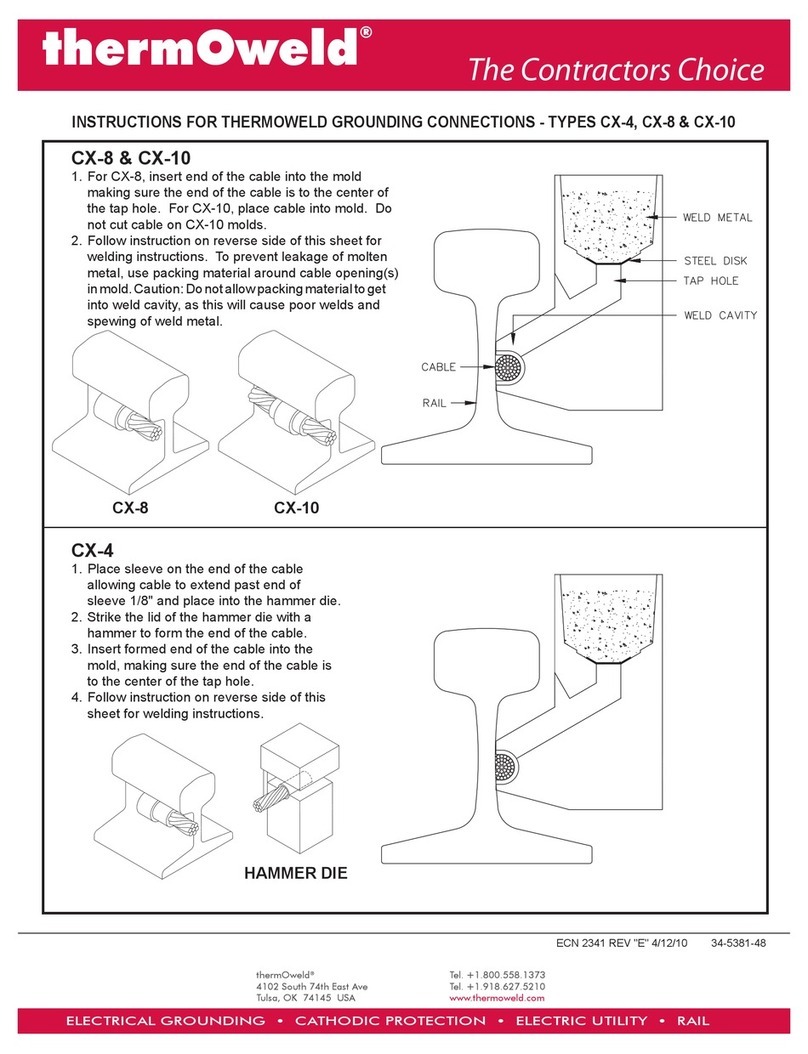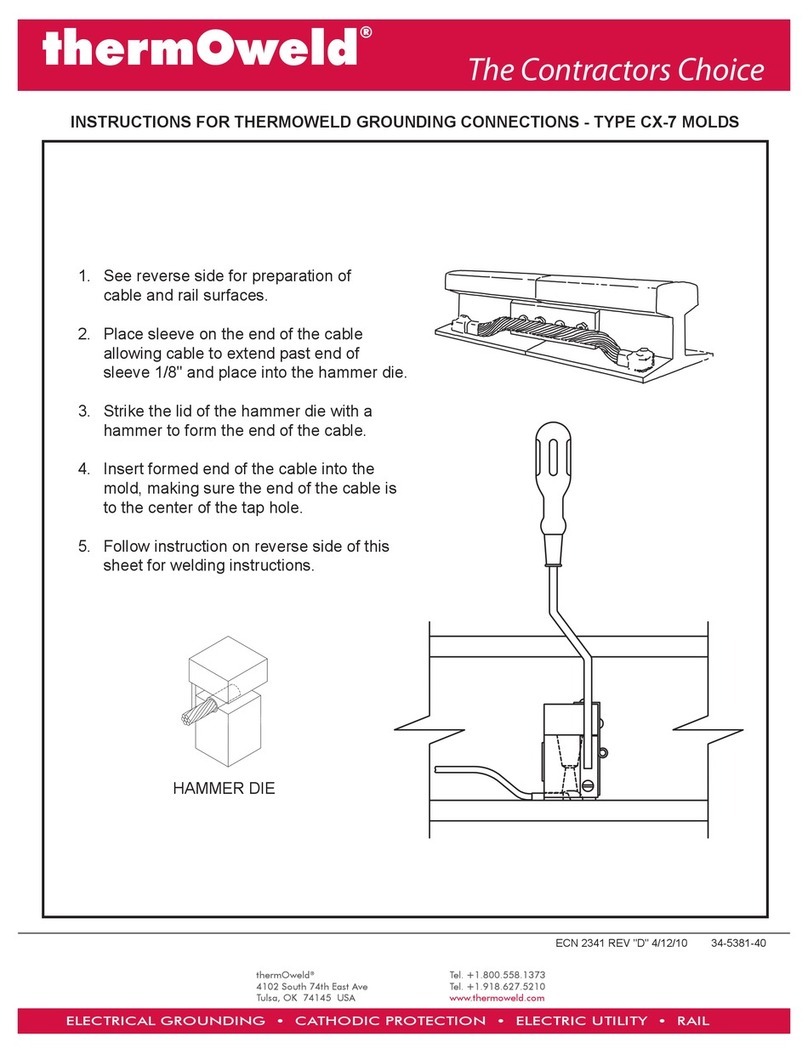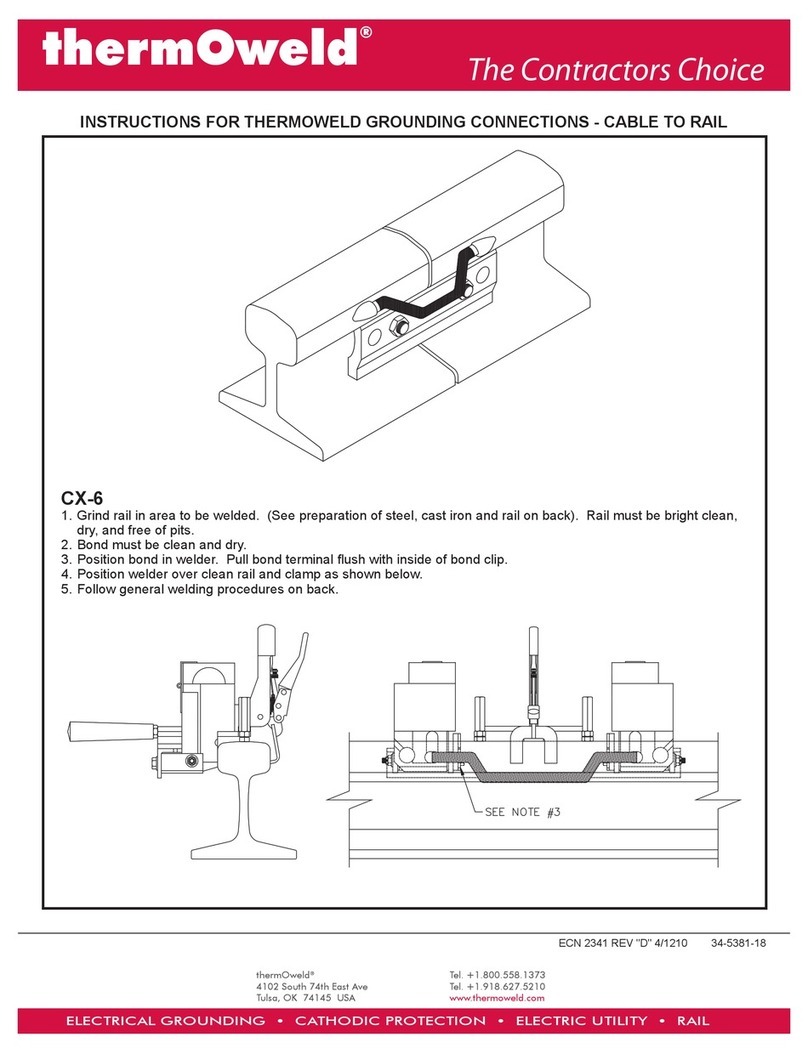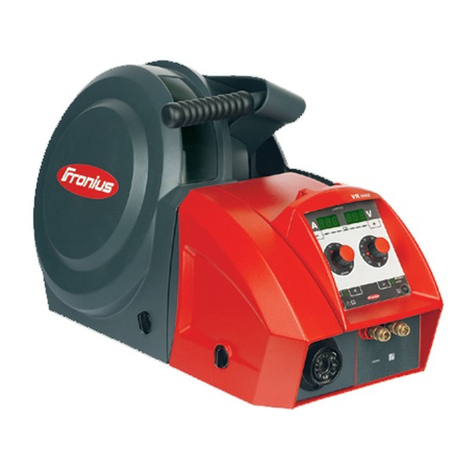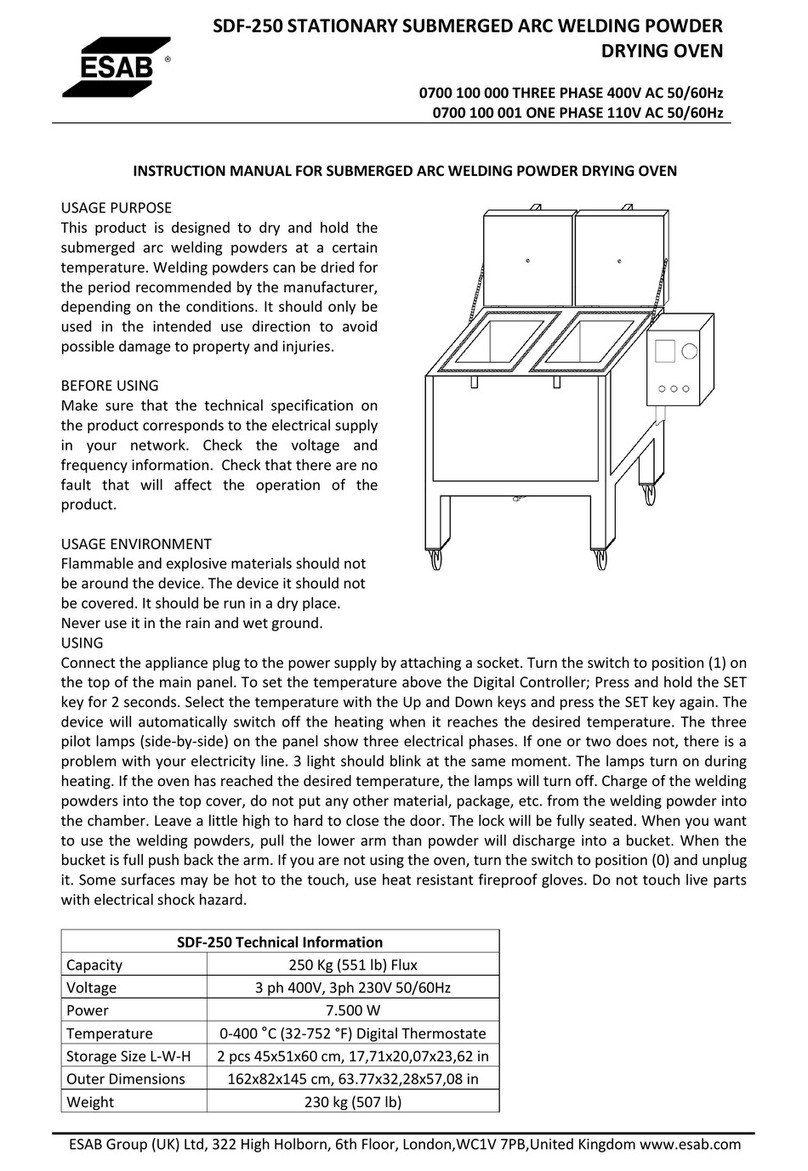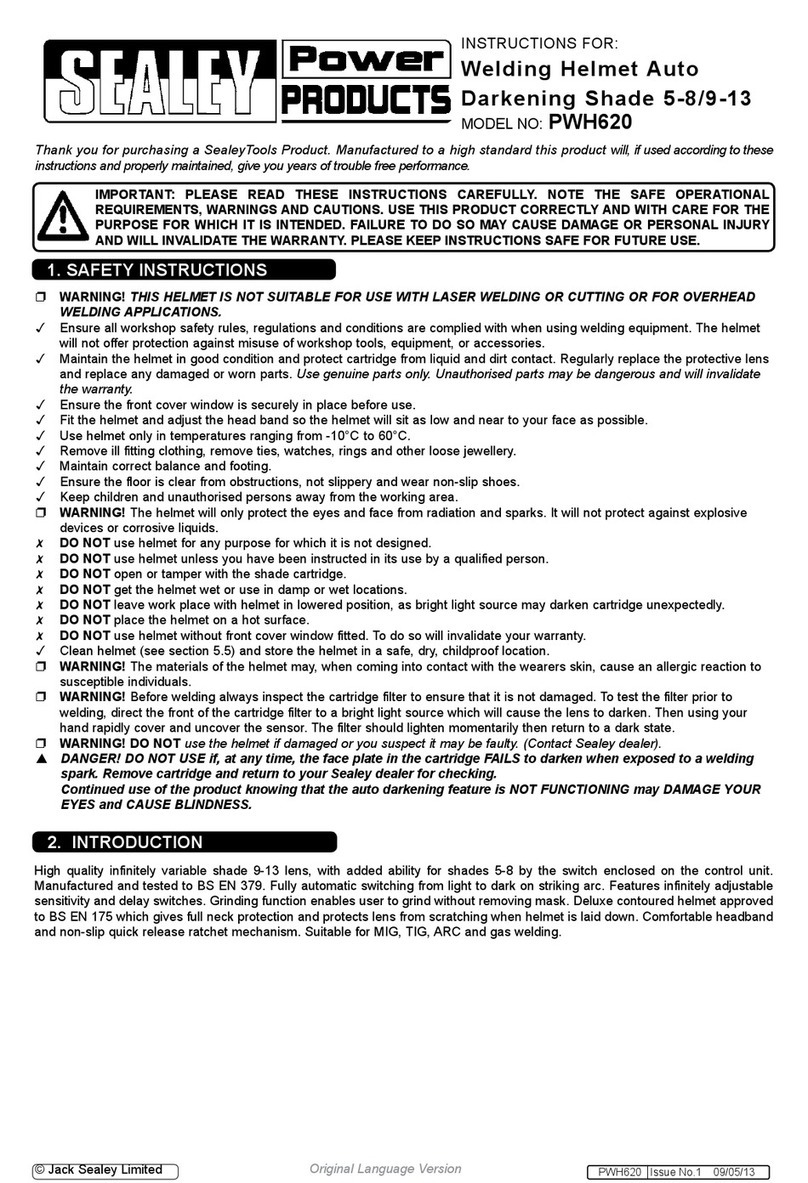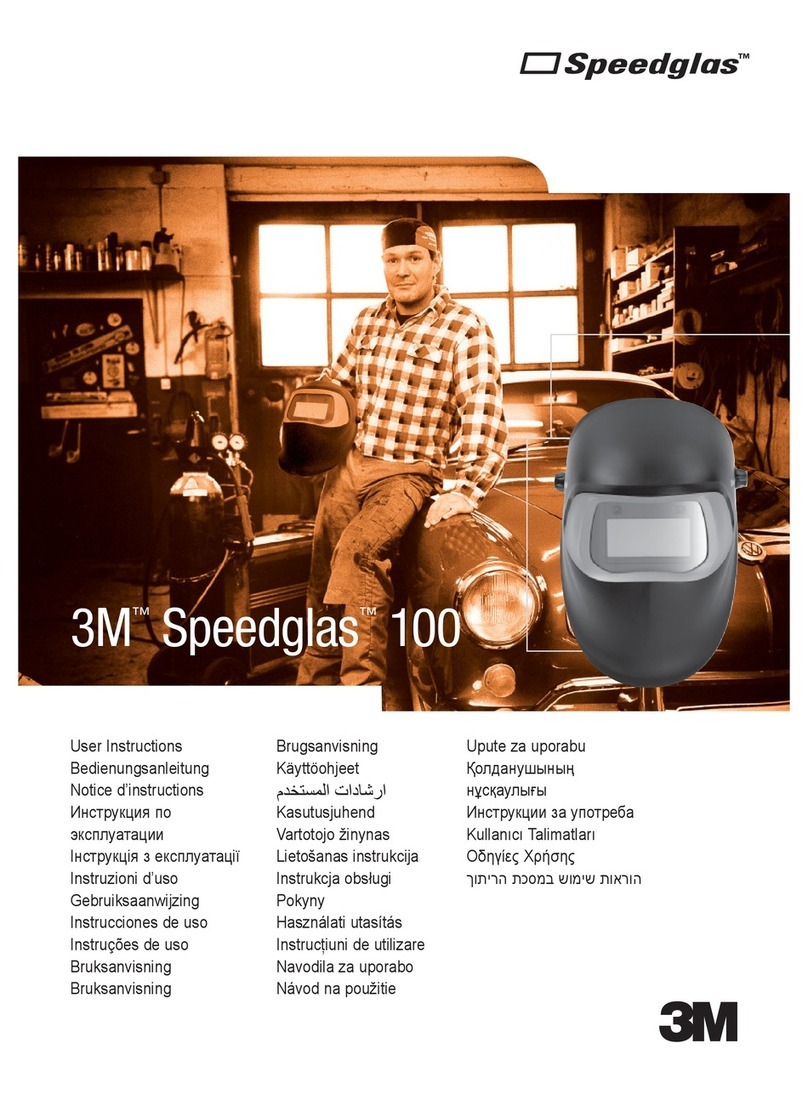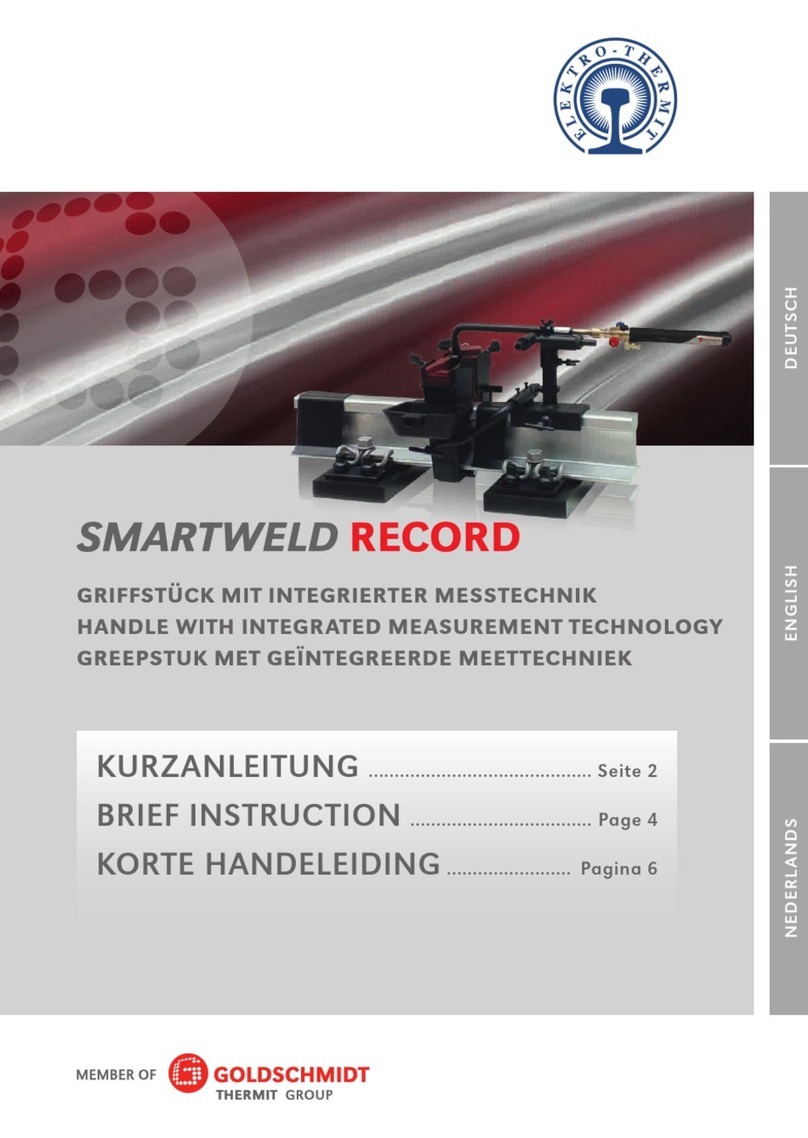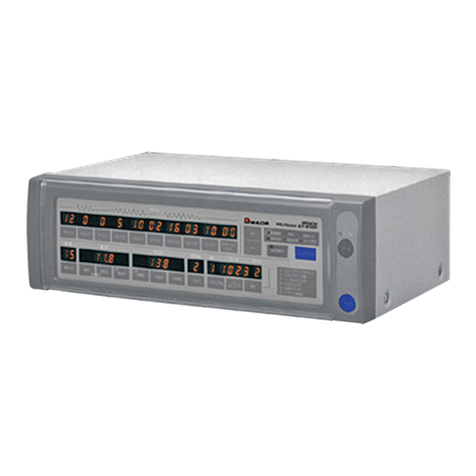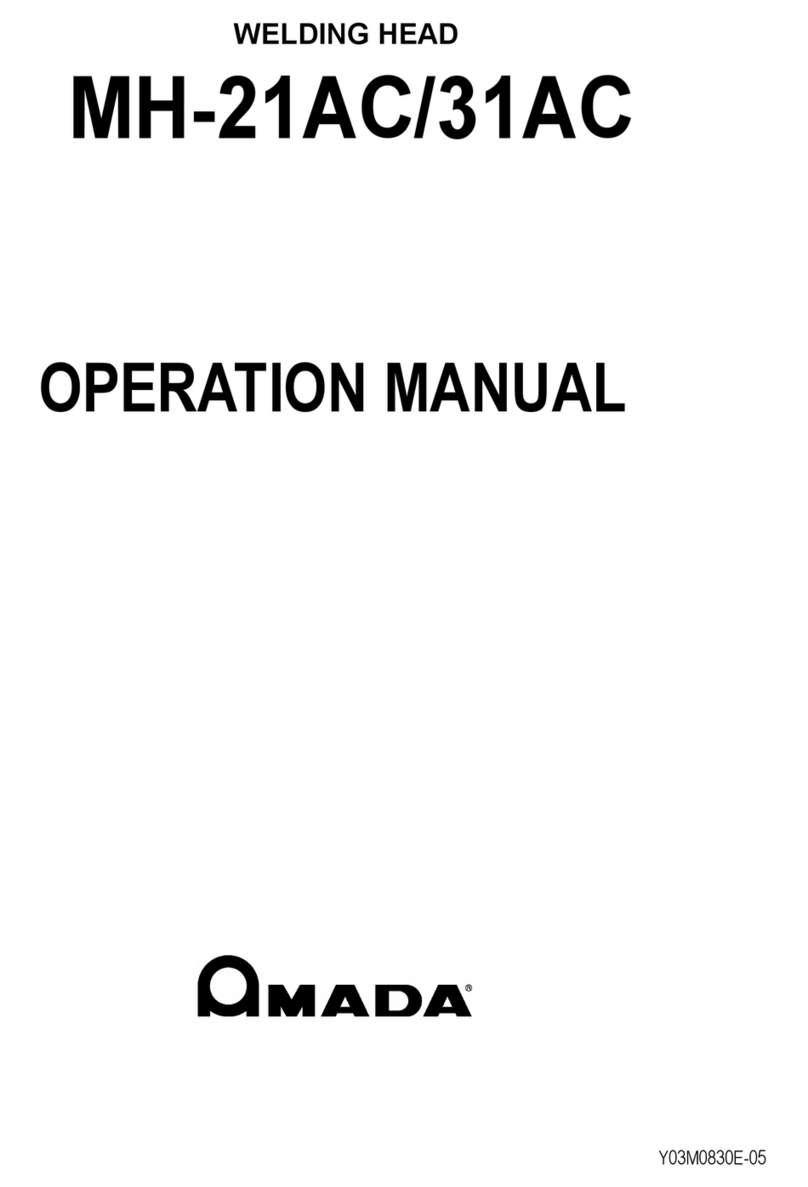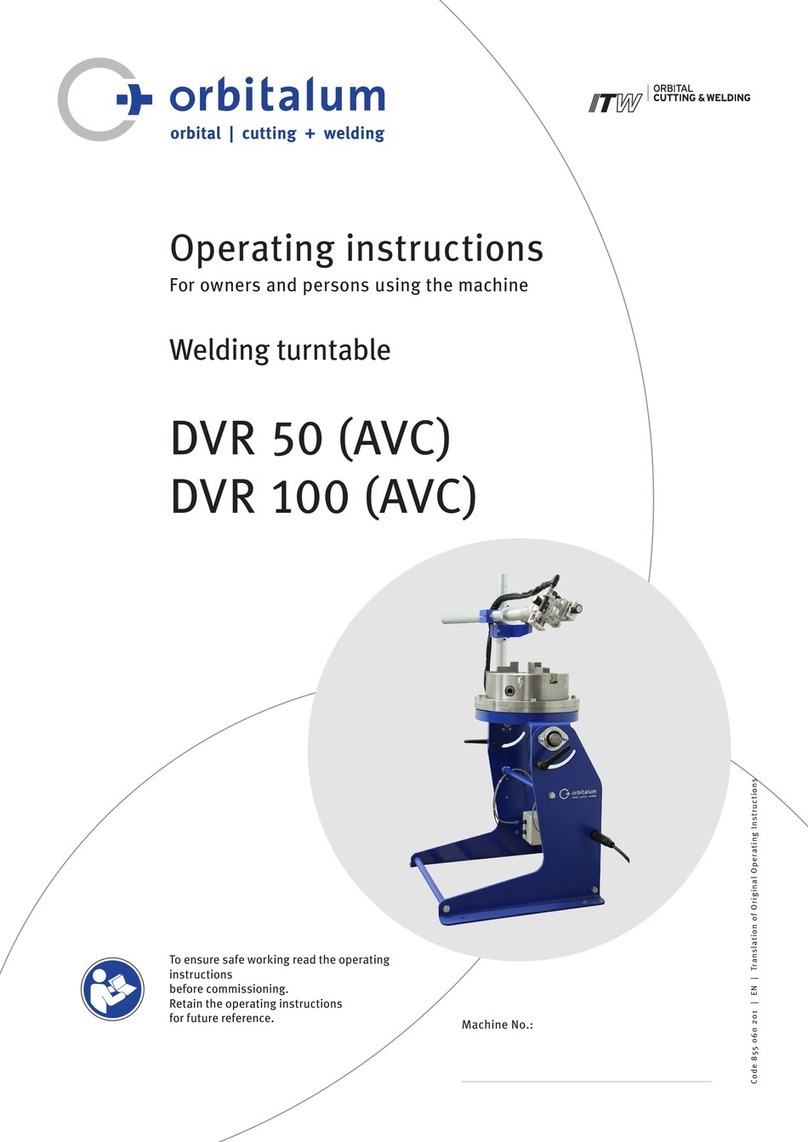ThermOweld CS-3 User manual

The Contractors Choice
thermOweld®
+1 (918) 627-5210 • 1-800-558-1373 • WWW.THERMOWELD.COM
ELECTRICAL GROUNDING • CATHODIC PROTECTION • ELECTRIC UTILITY • RAIL
thermOweld®Tel. +1.800.558.1373
4102 South 74th East Ave Tel. +1.918.627.5210
Tulsa, OK 74145 USA www.thermoweld.com
CS-6 & CS-27
Place cable in mold and secure to
surface using a C Clamp.
NOTE:
Packing material is required on
type CS-27 for 1/0 and larger cable
to prevent leakage
between cable and
steel surface.
CS-3
Insert cable into the mold
until ittouches thesurface being
welded. Secure to surface
using 40-0106-32 chain clamp
or a C Clamp.
CS-18
Place end of cable under the center
line of the tap hole. Secure to
surface using 40-0106-41 chain
clamp or a C Clamp. Pack cable
opening with packing material
when necessary.
CS-4 & CS-26
Place cable in mold and secure on
surface using 40-0106-32 chain
clamp or a C Clamp.
NOTE:
Packing material is
required on type CS-26
for 1/0 and larger cable
to prevent leakage
between cable and
steel surface.
CS-7
For 4/0 cable and smaller, insert
cable in mold all the way to the
bottom of the weld cavity. For 250
MCM and larger cable, place end of
cable to center of tap hole.
CS-23 & CS-25
Place end of cable at bottom of
tap hole. Secure mold to surface
using 40-0106-32 chain clamp or a
C Clamp.
NOTE:
Packing material is required on type
CS-25 for 1/0 and larger
cable to prevent leakage
between cable and steel
surface.
INSTRUCTIONS FOR THERMOWELD GROUNDING CONNECTIONS - CABLE TO STEEL OR CAST IRON
ECN 2341 REV "E" 4/12/10 34-5381-03

1-800-558-1373 • SALES • SERVICE • TECHNICAL SUPPORT • VISIT www.thermOweld.com
t
h
e
r
m
O
w
e
l
d
®
Z
Z
E
E
P a tented
E
Z
L
i
t
e
®
M
o
l
d
GENERAL SAFETY INSTRUCTIONS
1. Always wear proper clothing, safety glasses and gloves when
exothermic welding.
2. Only weld items mold is designed for.
3. Do not use worn or broken molds which could cause leakage
of molten weld metal.
4. Make sure that the material being welded ts in the mold
properly and that the mold will close tightly around them.
5. Do not alter molds or accessories without factory
authorization.
6. Avoid breathing concentrations of smoke, as it may be
hazardous to your health.
7. Avoid contact with hot materials.
8. Remove or protect re hazards in the welding area.
9. Avoid moisture and contaminants in the mold and materials
being welded. Contact of molten weld metal with moisture or
contaminants may cause weld metal to spew out of mold.
10. When welding to pipe or vessels, you should consider
the following:
a. the effect welding may have on structural members
and thin wall pipe or vessels.
b. pipe or vessels that are pressurized or contain (or
have contained) ammable, explosive or hazardous
materials should be evaluated in the case of a melt-
through or hot molten weld metal coming in contact
with any ammable, explosive or hazardous materials.
11. Failure to abide by the above and follow welding procedures
may result in improper welds, damage to the material being
welded or create hazardous situations for the individual.
PREPARATION OF CABLE
1. Cable must be bright, clean and dry.
2. Cable that is saturated with oil or grease must be cleaned.
Cable may be cleaned by burning it off with a torch (gasoline
blow torch, butane torch, acetylene torch) After burning off oil
or grease, a wire brush should be used to remove residue.
Wet cable must be dried out. Use a hand torch.
3. Corroded cable must be cleaned. Use the 38-0135-00
cable cleaning brush or a card cloth brush. It is important that
the ends of the individual strands are clean. This can best be
accomplished by making a fresh cut on the end of the cable.
4. Cable should be straightened before clamping mold in place.
Bent or out of round cable will hold mold open and cause leaks.
5. For hard drawn cable or cable under tension, use 38-0330-00
cable clamp.
6. Remove insulation from insulated cable before cutting with
hack saw. Otherwise ends of strands will become coated with
insulating material which may cause defective welds.
7. FLEXIBLE CABLE
A sleeve must be used when welding exible cable.
38-0329-00 wrap sleeves are recommended for 300 MCM
and smaller cable.
PREPARATION OF STEEL OR CAST IRON
1. Surface to be welded must be bright clean and dry.
2. Remove rust and mill scale with 38-0101-00 rasp, coarse
le or grinder.
3. Remove oil, grease or pitch coatings with a solvent or torch.
4. Galvanized surfaces may be cleaned with emery cloth to
remove oxide lm. It is not necessary to remove galvanizing
unless it is double or triple galvanized. Use 38-0331-00
galvanizing bar to regalvanize around weld.
5. Cast iron surfaces must be free from large pits and aws.
For cast iron less than 1/2” thick, do not use larger than a
#65 cartridge.
NOTE: Use powder marked C.I. for cast iron. Do not use
regular powder.
6. Under some conditions of temperature and humidity the
surface to be welded will sweat causing porous welds. This
can be eliminated by warming the surface with a hand torch
prior to welding.
DO NOT USE cast iron connections on soil pipe (ASTM A-74-82).
A test weld should be made on a section of the pipe being used to
determine the possibility of detrimental metallurgical effects.
WELDING PROCEDURE
1. Check mold tag for material to be welded and proper cartridge
size to use.
2. Make sure all surfaces and conductors are clean, dry and are
the proper sizes for the molds application per mold tag.
3. Molds can be dried by heating to approximately 250ºF. Molds
may be dried with a hand operated butane torch or by ring a
charge in the mold before making the desired weld.
4. Position mold onto conductor(s). See front of this sheet for
positioning of conductors into mold. Lock mold with handle
clamps or frame, whichever is the case.
5. Insert steel disk being sure it is directly centered over the
tap hole. Failure to insert disk into mold or failure to seat the
disk properly can create an improper weld and may cause
mold to spew weld metal.
6. Pour proper weld cartridge(s) into crucible being careful not to
loosen all the starting powder while pouring weld metal into
mold. Use of wrong weld cartridge can cause improper welds
or damage to molds.
7. Close the lid of the mold and place a small amount of starting
powder in the ignition pocket.
OR
Insert the EZ Lite®ignitor in the connector of thermOweld EZ
Lite Remote™ Unit. Close the lid and place the ignitor in the
top opening of the EZ Lite®Lid allowing the connector to rest
on the lid.
8. Before igniting, verify conductor positioning and that mold is
closed completely.
9. Ignite the starting powder with the int ignitor. Pull int ignitor
away from starting powder right after trigger is pulled to keep
from fouling int ignitor. (Do not place any exposed body part
directly over lid or in front of lid opening.)
OR
Turn the power button to the “ON” position on the EZ Lite
Remote™ Unit followed by the “operate” button until the
exothermic reaction is initiated.
10. Wait for 15 seconds before opening mold to allow weld metal
to cool.
11. To clean the mold, use a natural bristle brush, soft cloth or
newspaper before making next weld. On horizontally split
molds, use a small diameter rod or screw driver to remove
slag from tap hole. Caution should be used when cleaning
molds to avoid burns from contact with hot mold.
DO NOT USE WIRE BRUSH TO CLEAN MOLD!
NOTE: 1. A fouled int ignitor may be cleaned by soaking in
house hold ammonia.
2. Proper cartridge size is marked on mold tag and
shown on the bottom of the cartridge tube.
3. Cartridge size is the approximate weight of the powder
in grams. When the cartridge size specied is not
available, two or more smaller cartridges or part of a
larger cartridge may be used. Care should be taken
not to mix starting material in-between cartridges.
4. Handle Clamp adjustments may be made by removing
cotter pin and clevis pin and turning eye bolt one turn
clockwise to tighten or one turn counter clockwise to
loosen.
This manual suits for next models
8
Other ThermOweld Welding Accessories manuals
Popular Welding Accessories manuals by other brands

COWLEY INDUSTRIES
COWLEY INDUSTRIES LRS1000 Installation and operating instructions
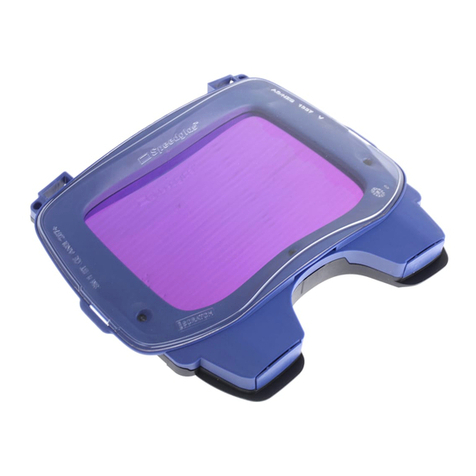
3M
3M Speedglas 9100 Series user manual
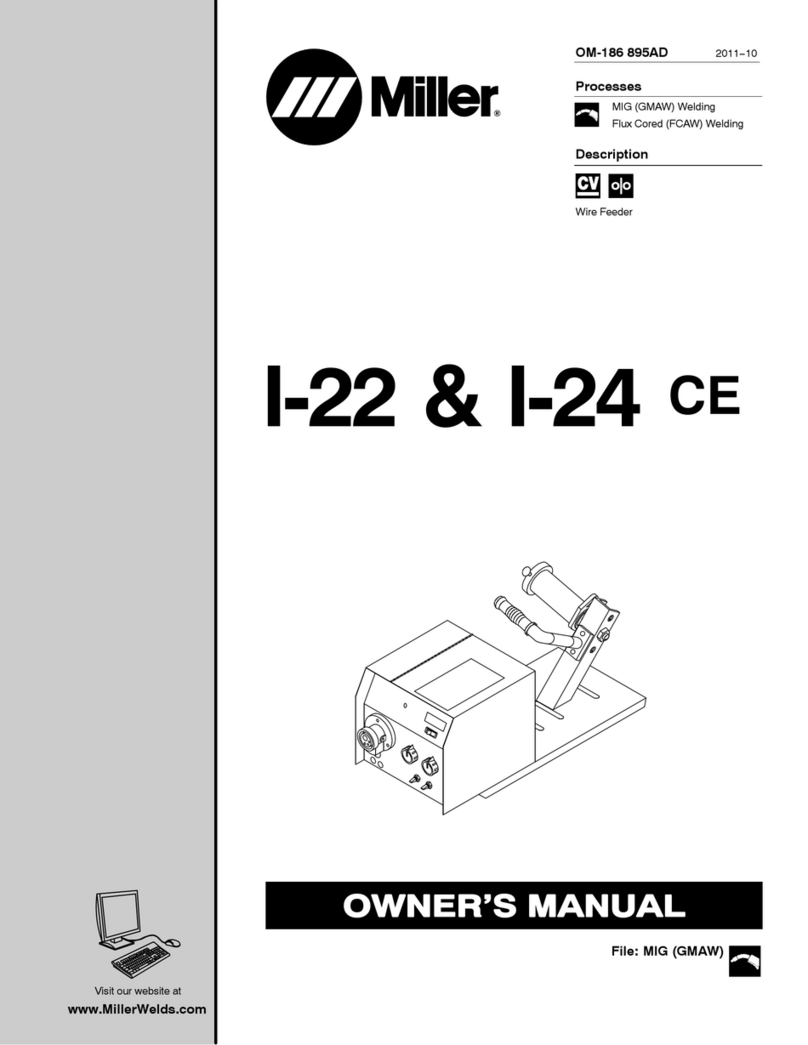
Miller
Miller I-22 CE owner's manual
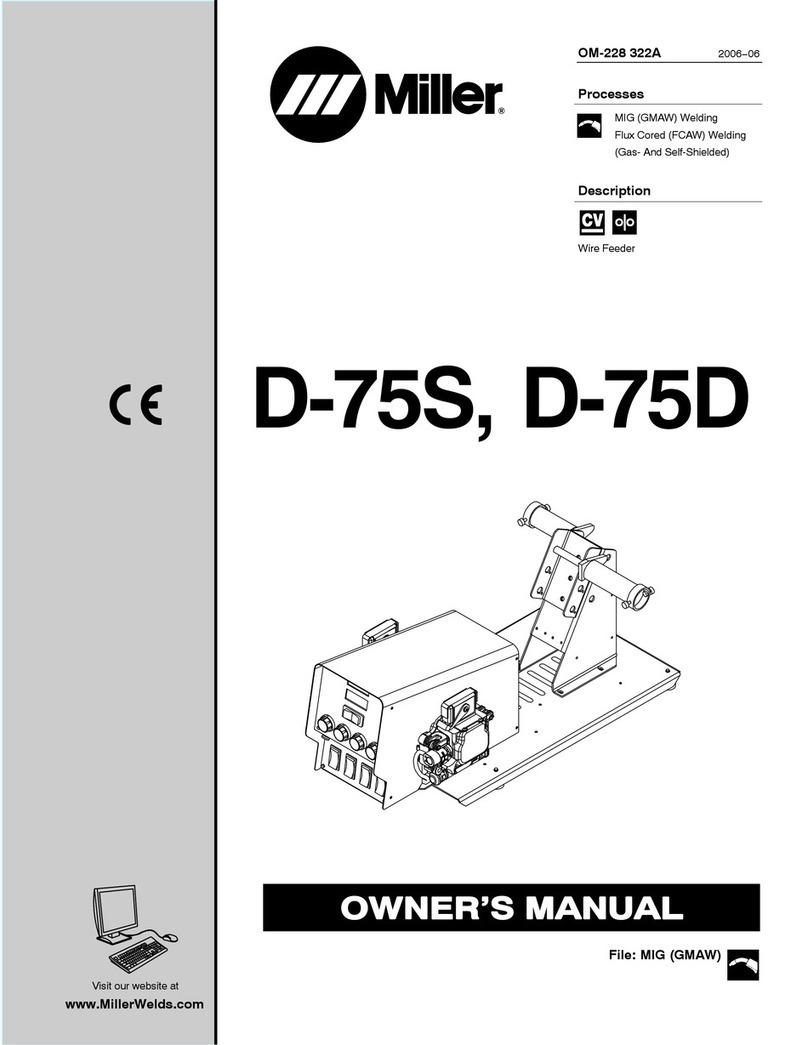
Miller Electric
Miller Electric D-75D owner's manual
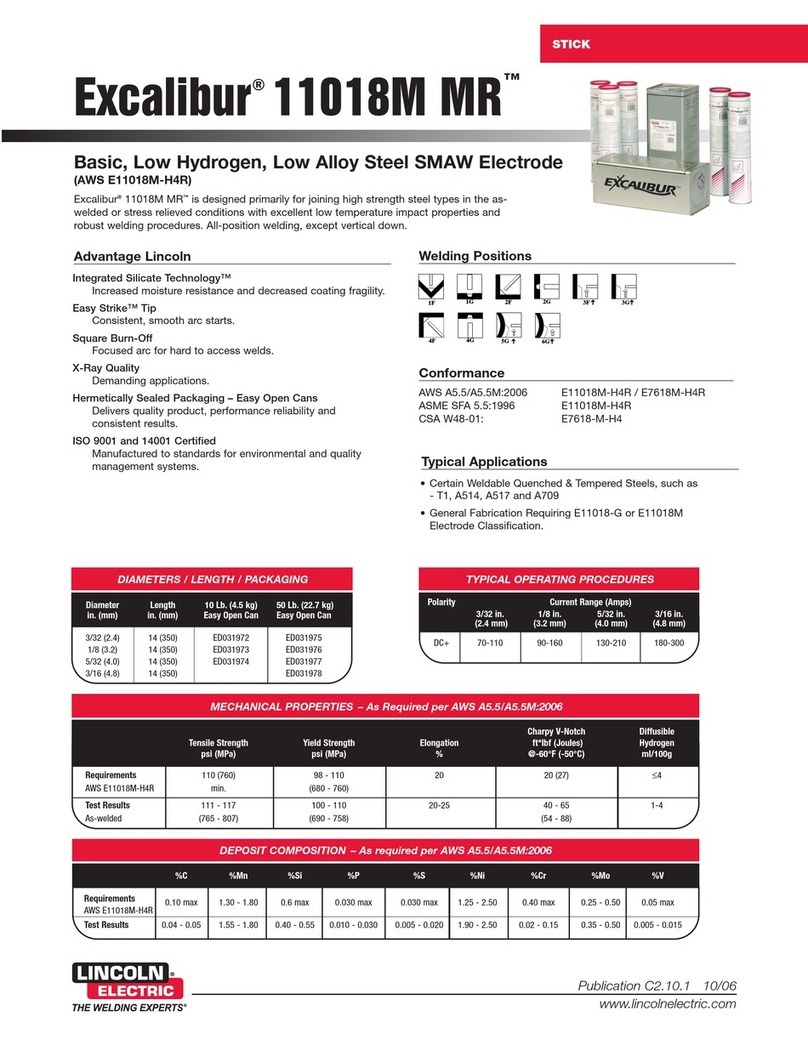
Lincoln Electric
Lincoln Electric Excalibur 11018M MR product manual
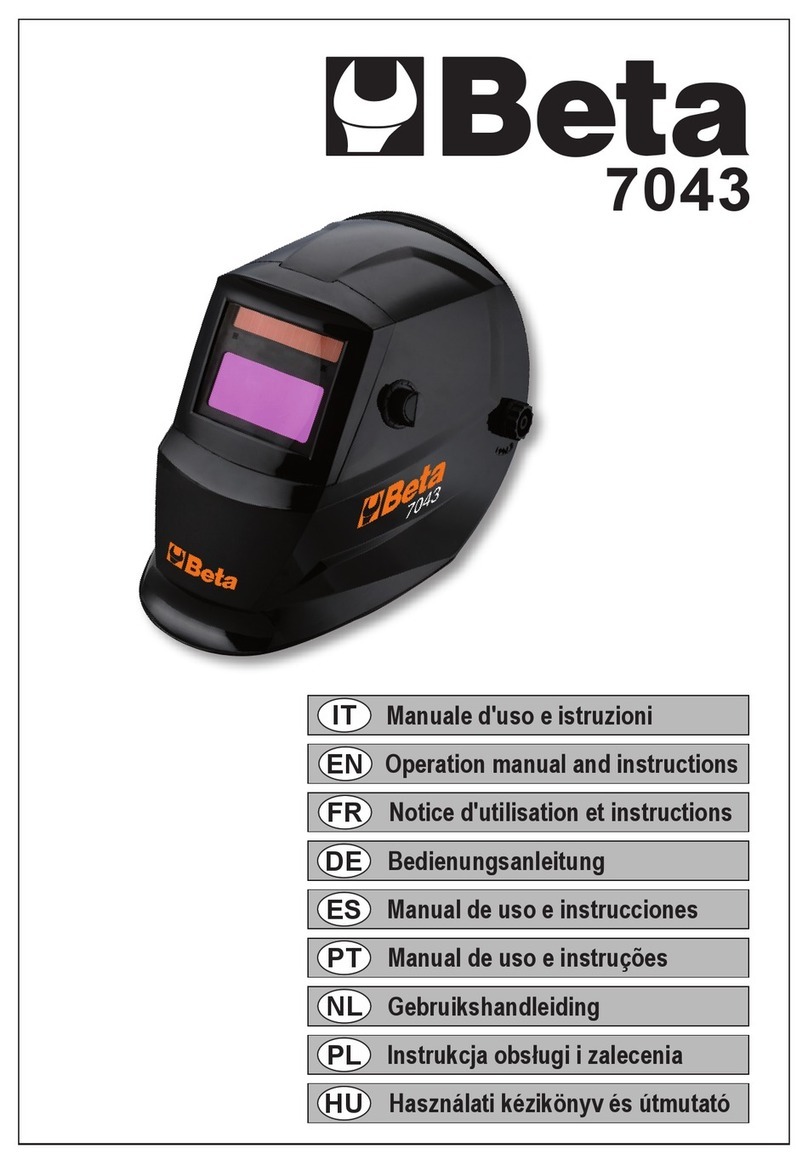
Beta
Beta 7043 Operation manual and instructions
